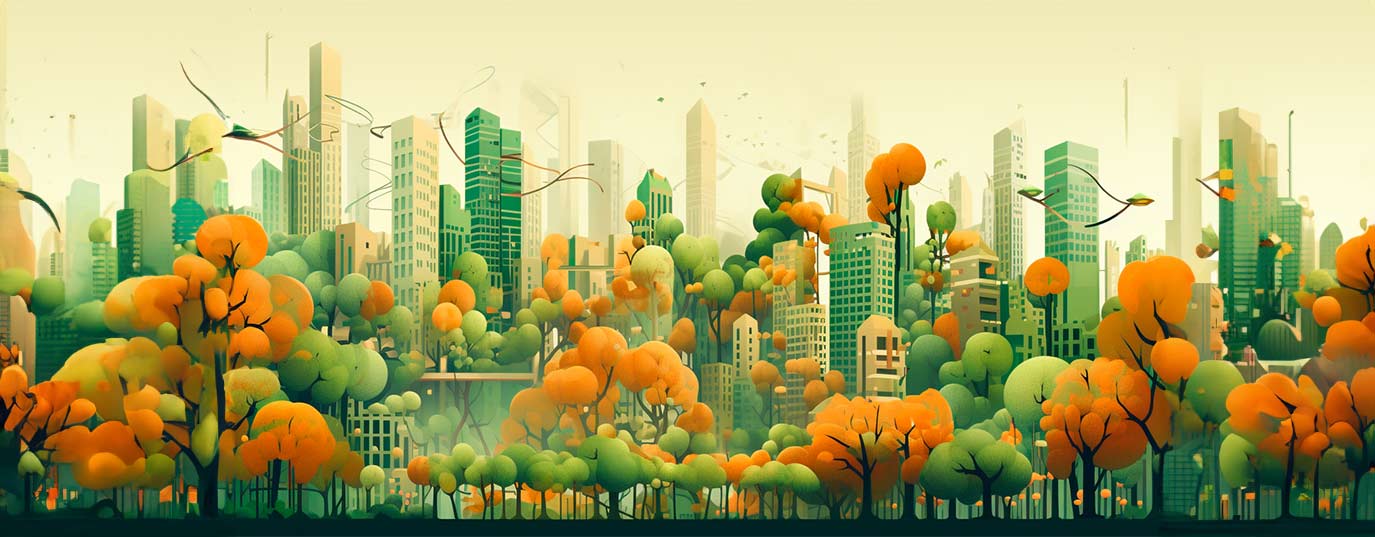Think of cities as part of nature: a new perspective for urban development
Imagining cities as living systems which evolve with nature and people, could be the best strategy for designing solutions to combat climate change.
In this increasingly urbanized world, where cement and steel can dominate the landscape, there’s often a conflict between cities and the nature surrounding them.
We think of the city and nature as separate ideas, disconnected “places”. But, according to the experts, it is now time to change this way of thinking and reclassify cities as a form of “new nature”, with the understanding that cities are part of nature even though they don’t resemble it.
As such, architects like Adrian McGregor, founder and design director of McGregor Coxall, which has offices in Australia and the United Kingdom and is dedicated to planning resilient, sustainable cities, proposes substituting the word “city” for “bio-city”. He expounds this in his book “Biourbanism: cities as nature” and argues for it as one of the solutions to climate change. In this way, towns and cities can become bastions of resilience and sustainability, leading the way to a more sustainable, prosperous future.
What will I learn from this article?
- The challenge of understanding the city as part of nature
- Biourbanism
- Nature-based solutions applied to cities
The challenge of understanding the city as part of nature
Cities and nature are often considered to be separate entities when thinking of the environment and climate crisis.
Since cities are responsible for over 75% of greenhouse gas emissions, designing smart, sustainable cities is the most pressing challenge for tackling climate change, as McGregor pointed out in this interview with Bloomberg.
Imagine a cityscape where skyscrapers intertwine with exuberant vertical gardens and roofs are covered with lawns or allotments. Residents benefiting from such urban lungs can find refuge from the metropolis’ frenetic bustle as nature reclaims its place at the very heart of modern civilization.
According to experts in the field, nature-based solutions are key to resolving environmental challenges. Such solutions seek to use ecological processes to tackle problems like air pollution, global warming and biodiversity loss.
Biourbanism
To decarbonize our cities, says McGregor, first we must realize that cities are “spectacular living, dynamic systems evolving with us”. He argues that cities should be reclassified as a form of “new nature” and classical urban planning models replaced by biourbanism, the path to decarbonizing cities and increasing their resilience in the face of climate change.
This concept, as defined by the International Society of Biourbanism, “focuses on the urban organism, considering it as a hyper-complex system, governed by internal and external dynamics and their mutual interactions”.
“Cities are spectacular living, dynamic systems evolving with us”
McGregor structures cities into 10 interconnected systems: citizens, economy, energy, infrastructure, mobility, technology, water, waste, landscape and food. Together, the interaction of these systems could well determine the health and prosperity of a city.
Nature-based solutions applied to the city
One of the ways in which cities can embrace biourbanism is by creating and restoring green zones. Urban spaces can be transformed into urban woods, parks and gardens, which do not only improve air quality, but also act as carbon sinks. These green spaces provide habitats for wildlife and help conserve biodiversity in urban environments.
Climate change Another important strategy is implementing green infrastructure, including green roofs, plant walls and sustainable drainage systems, as in sponge cities. Such solutions not only reduce urban temperatures and water runoff, they also improve the energy efficiency of buildings and promote a healthier living environment.
Another important strategy is implementing green infrastructure, including green roofs, plant walls and sustainable drainage systems, as in sponge cities. Such solutions not only reduce urban temperatures and water runoff, they also improve the energy efficiency of buildings and promote a healthier living environment.
Cities can also foster sustainable mobility by creating extensive public transport networks, cycle infrastructure and pedestrianizing areas in the city. By reducing private vehicle dependence, greenhouse gas emissions disappear and air quality in the city improves.
It is important to note that imagining cities as nature does not only benefit the environment, but also residents. Studies demonstrate that living in natural environments has a positive impact on our mental and physical health. Connection with nature offers a sense of wellbeing and reduces stress and anxiety.
“Living in natural environments has a positive impact on our mental and physical health”
McGregor talks of designing a resilience action plan. Starting with the 10 interconnected systems, each city should try to plan for the impact of climate change and establish targets and challenges, depending on whether it is a coastal city, one with scarce rainfall, or a tropical climate…
For him, the key to this biourbanistic model is the development of a digital twin of the physical city, linked to real world data that permits institutions to simulate changes in the city and evaluate possible consequences in terms of energy or water use, for example, and to integrate these digital twins into the metaverse.
Such models could be really powerful in allowing experts and governments to carry out climate impact tests and plan cities’ resilience, while optimizing investment and infrastructure spending for the right areas.
It’s now time to rethink how we design, build and manage our cities, so that they become real oases of life and sustainability in a world of constant change.
Sources:







